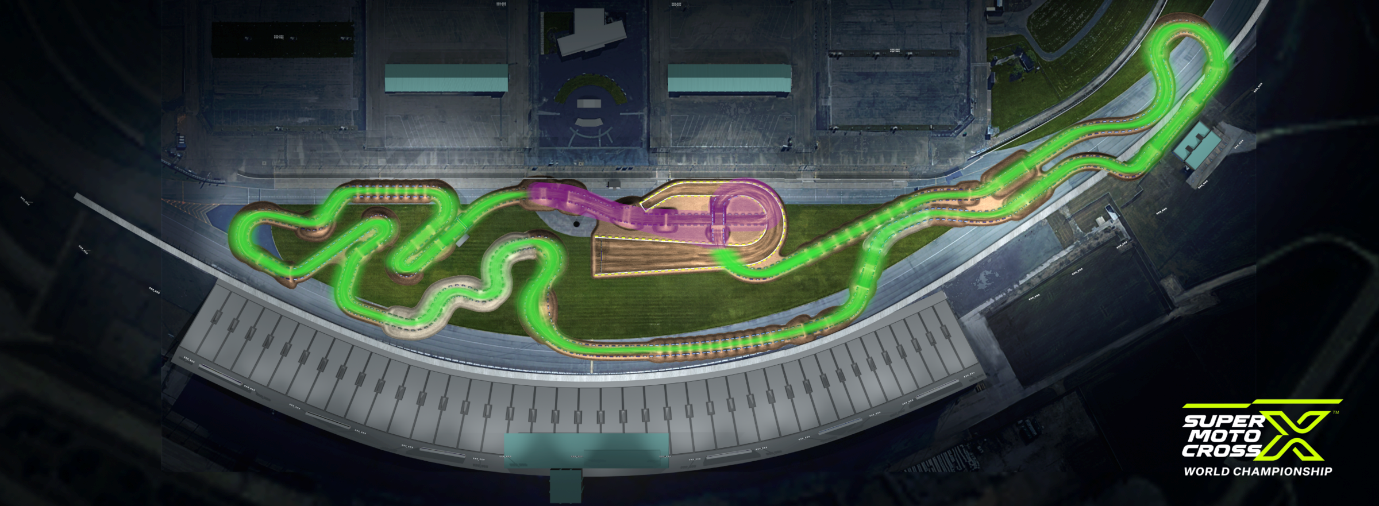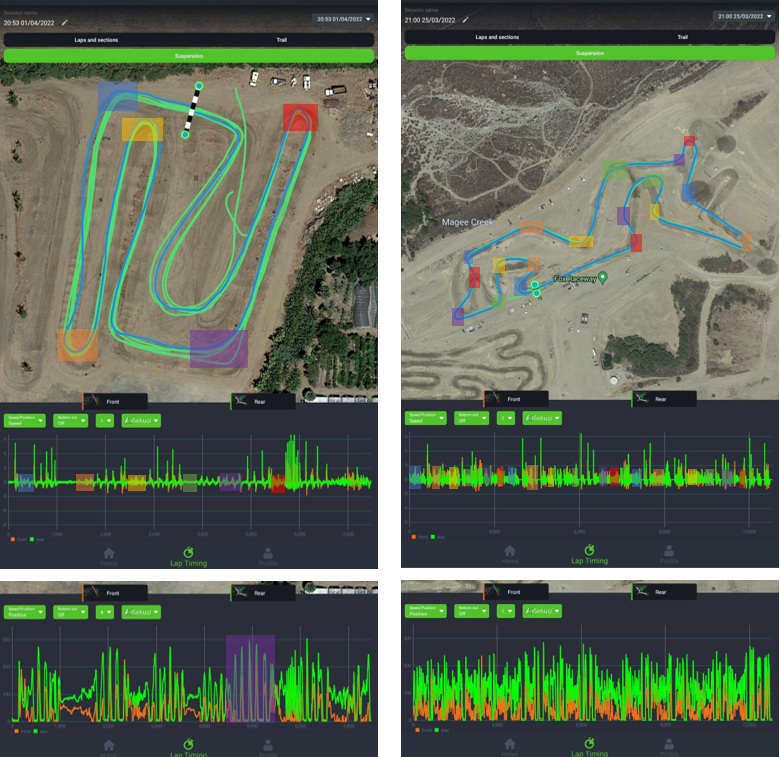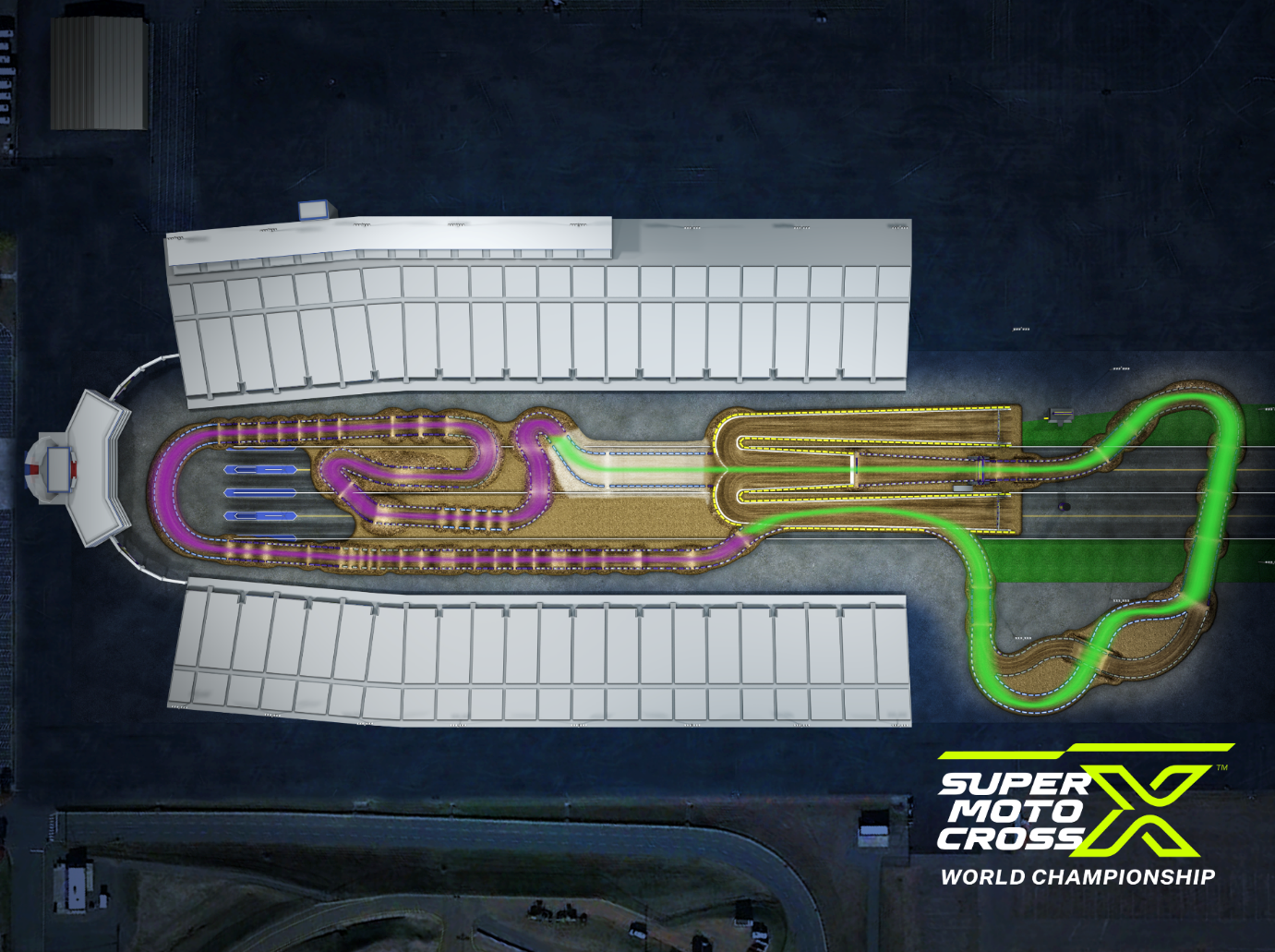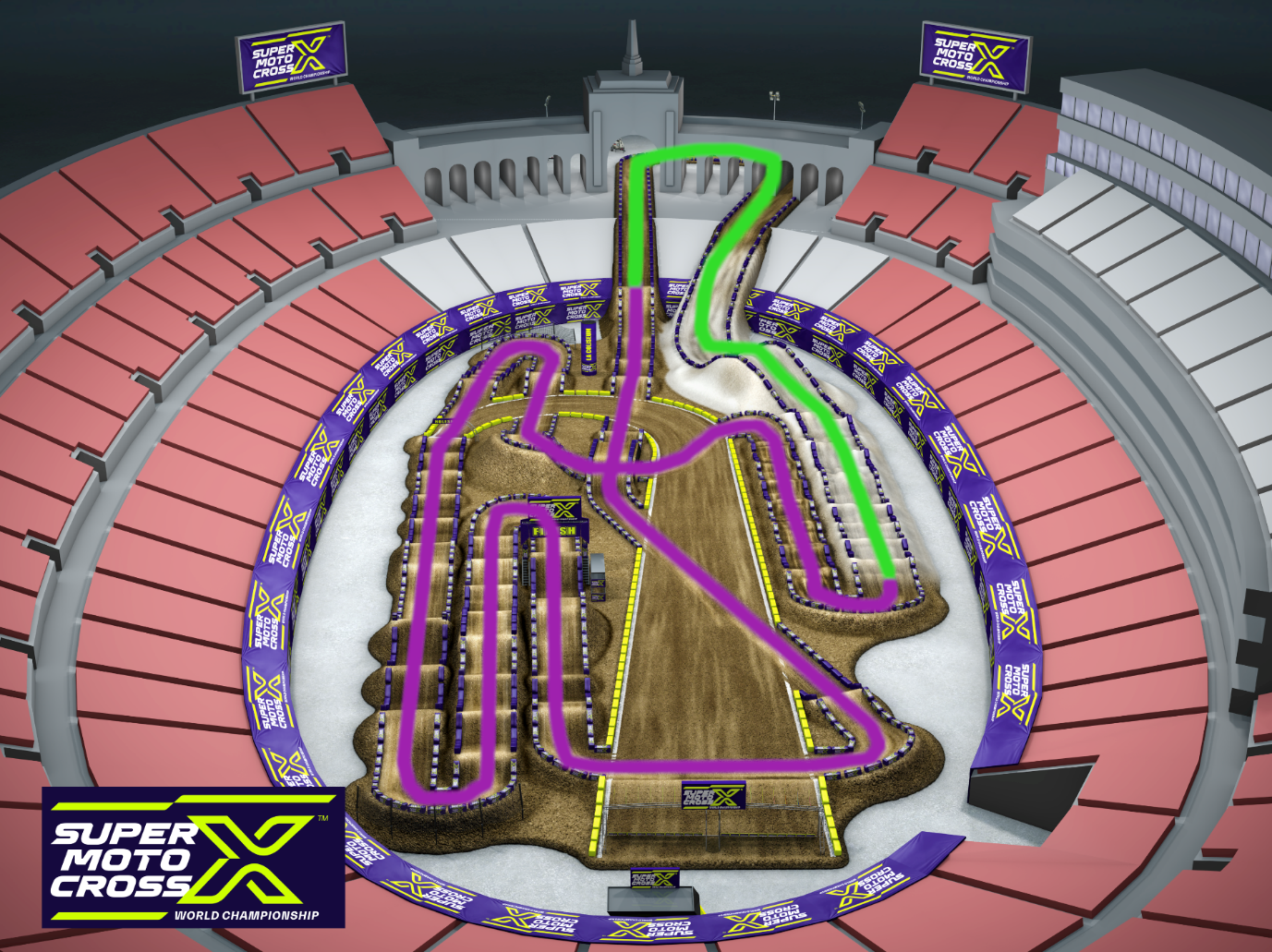
“The motocross section was very difficult on supercross suspension, with the braking bump getting bigger, it was tough to manage, I mean for me”. (Credit – How was your weekend, www.swapmotolive.com) Dylan Ferrandis didn’t mince his words after the first round of the Supermotocross playoff at ZMAX Dragway last September when it came to his setup. The new format threw the biggest curveball since the move to four strokes for suspension, because the tracks were actually a real hybrid.
I know what you’re thinking, these teams and riders are the best in the world, how can they not get it figured out? Why were they even using supercross suspension on motocross?
The technology in dirt bike suspension is probably often overlooked when compared with Moto GP, or Formula 1, but the truth is that the mechanism used inside a set of forks and shock to control damping is on par, or even a step above what we see used in the pinnacle of tarmac motorsports. This is because the speeds that the suspension move at are so varied compared to the smooth surface of the asphalt. Yes, when an F1 car hits the curbs, the suspension must move quickly, but this is maybe more of a blow off pressure release valve than the requirement for controlled movement like we see in the transitions of a supercross rhythm. And herein lies our answer to the woe’s of Ferrandis, as well as the other riders.
The following images show the lap outline of a Californian supercross track on the left, and Fox Raceway on the right. Underneath the track outlines is a plot of the front and rear suspension speed for one full lap, and underneath this is the suspension position for one full lap. What stands out?
You can see that the speed of the suspension in the corners in supercross is about half the speed of what you see in the corner sections of the motocross track. (The coloured rectangles on the track outline are sequenced with the coloured rectangles on the suspension speed data). This means that braking and accelerating bumps are much smaller in supercross. With smaller bumps, the riders and teams can run much stiffer suspension without losing comfort. Those are words in the world of dirt bikes that go together like peanut butter and jello; supercross suspension and stiff. Do you remember when Fabio Quarteraro tried to push down on Tomac’s Yamaha this year? Yep, supercross stuff is pretty stiff!

So, why do they need stiff suspension in supercross? The answer lies in the second graphs under the track outline, the suspension position data. At the top of the graph the suspension is fully compressed, and at the bottom it’s fully extended. You can see how even with the much stiffer settings, the suspension is still using the full stroke on a supercross track, especially the rear through the transitions in jumps (shown by the large purple rectangle). Imagine now trying to go through that section with the softer motocross settings, you wouldn’t have an ankle left!
Let’s take a look at the three SMX tracks which opened in ZMAX Dragway, Concord, North Carolina, moved on to Chicagoland Speedway in Joliet, Illinois, and finished up at the Los Angeles Memorial Coliseum in California. In the following images, each track outline has been marked out with purple to show the supercross sections, and green to show the motocross sections.
The opener at ZMAX Dragway was really tough. With nearly a 50/50 split between supercross and motocross sections. At this track, there was no choice but to run supercross settings, because it would have been too dangerous for the rider to ride through the supercross transitions without the hold up of the stiffer suspension. The challenge was to ride on the faster sections outside the stadium area where the braking and accelerating bumps were building up.

Chicagoland offered some more clarity, with the majority of the circuit being a more motocross style. Even the double jumps and over-under are manageable on motocross settings, but the riders would have to be sure to be precise with their track position, especially on landing, or else they could easily end up in a situation like Tomac found himself in back in May.

Finally, there was the LA Coliseum. This was easily the most “supercrossy” of the three venues, albeit a little bit toned down with the absence of whoops. Nevertheless, the riders were still challenged, especially in the sand section where we saw big crashes from Aaron Plessinger, Dean Wilson and most notably Chase Sexton. How much of the blame for these accidents can be laid at the feet of setup though is up for debate, as the malleable surface of sand can often throw a curveball.

What can be done in future to help the riders and teams navigate setup in these venues. If we take the example of Formula 1 again, each time they go to a new track, they are going in blind right? Well not really. Every time these teams go to a track, they gather as much data as they can, including suspension position and speed. Before ever rolling a lap around a new circuit, they can already model up how they think the car will perform in those conditions, and once they gather some on track data, they can fine tune the settings. Maybe the track is a little bumpier, or the corner speeds are slightly different to what they modelled. Well, the same can be done for motocross, supercross and supermotocross.
The current method of suspension testing and development on dirt bikes is heavily based on trial and error, and rider feedback. Rider feedback is always necessary as it is the requirement of the suspension to keep the rider as comfortable as possible, not to satisfy a math’s equation. The down side is that over 90% of riders can find it difficult to communicate what the bike is doing on the circuit. If teams had gathered suspension data from the supermotocross tracks this year, it may have been possible to identify areas for improvement in the design of the damping curve, or more position sensitive damping, as well as be able to better judge the settings needed for tracks in the future. It looks like SMX is here to stay, and so too will be the handling issues felt by Dylan Ferrandis and other’s this year.
If you would like to work with us, or the Motoklik system, please feel free to email me on [email protected]
Kind Regards,
Jens
